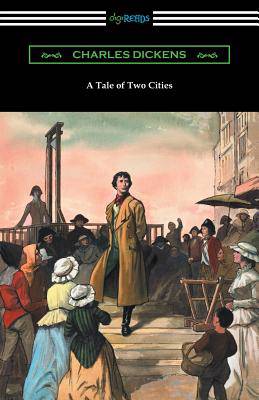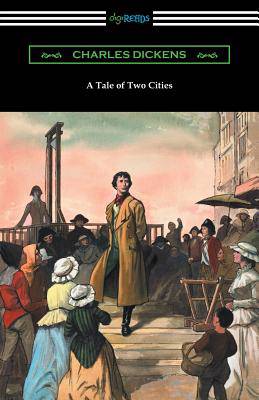
- Afhalen na 1 uur in een winkel met voorraad
- Gratis thuislevering in België vanaf € 30
- Ruim aanbod met 7 miljoen producten
- Afhalen na 1 uur in een winkel met voorraad
- Gratis thuislevering in België vanaf € 30
- Ruim aanbod met 7 miljoen producten
Zoeken
A Tale of Two Cities (Illustrated by Harvey Dunn with introductions by G. K. Chesterton, Andrew Lang, and Edwin Percy Whipple)
Charles Dickens
Paperback | Engels
€ 20,45
+ 40 punten
Omschrijving
"It was the best of times, it was the worst of times," so begins Charles Dickens's famous novel concerning the contentious time leading up to and during the French Revolution. In these first words Dickens exemplifies the dichotomous relationship that existed between the aristocracy and the lower classes of the time and the universal themes that would be depicted throughout the book. "A Tale of Two Cities," is set in London and Paris, the titular two cities, at the end of the 18th century, and principally concerns the lives of Dr. Alexandre Manette, his daughter Lucie, who marries a French nobleman, Charles Darnay, and their close family friend, barrister Sydney Carton. Despite the union of Lucie and Darney, Carton confesses his love to Lucie, declaring to "embrace any sacrifice for you and for those dear to you," a promise that he will uphold in dramatic fashion by the end of the novel. Dickens considered "A Tale of Two Cities" to be the best novel that he had ever written. One of only two works of historical fiction that the author would compose; it is a sweeping narrative that explores the best and the worst of the human character and condition. This edition is printed on premium acid-free paper, includes illustrations by Harvey Dunn, and introductions by G. K. Chesterton, Andrew Lang, and Edwin Percy Whipple.
Specificaties
Betrokkenen
- Auteur(s):
- Illustrator(s):
- Uitgeverij:
Inhoud
- Aantal bladzijden:
- 314
- Taal:
- Engels
Eigenschappen
- Productcode (EAN):
- 9781420951769
- Verschijningsdatum:
- 10/11/2015
- Uitvoering:
- Paperback
- Formaat:
- Trade paperback (VS)
- Afmetingen:
- 140 mm x 216 mm
- Gewicht:
- 399 g

Alleen bij Standaard Boekhandel
+ 40 punten op je klantenkaart van Standaard Boekhandel
Beoordelingen
We publiceren alleen reviews die voldoen aan de voorwaarden voor reviews. Bekijk onze voorwaarden voor reviews.











